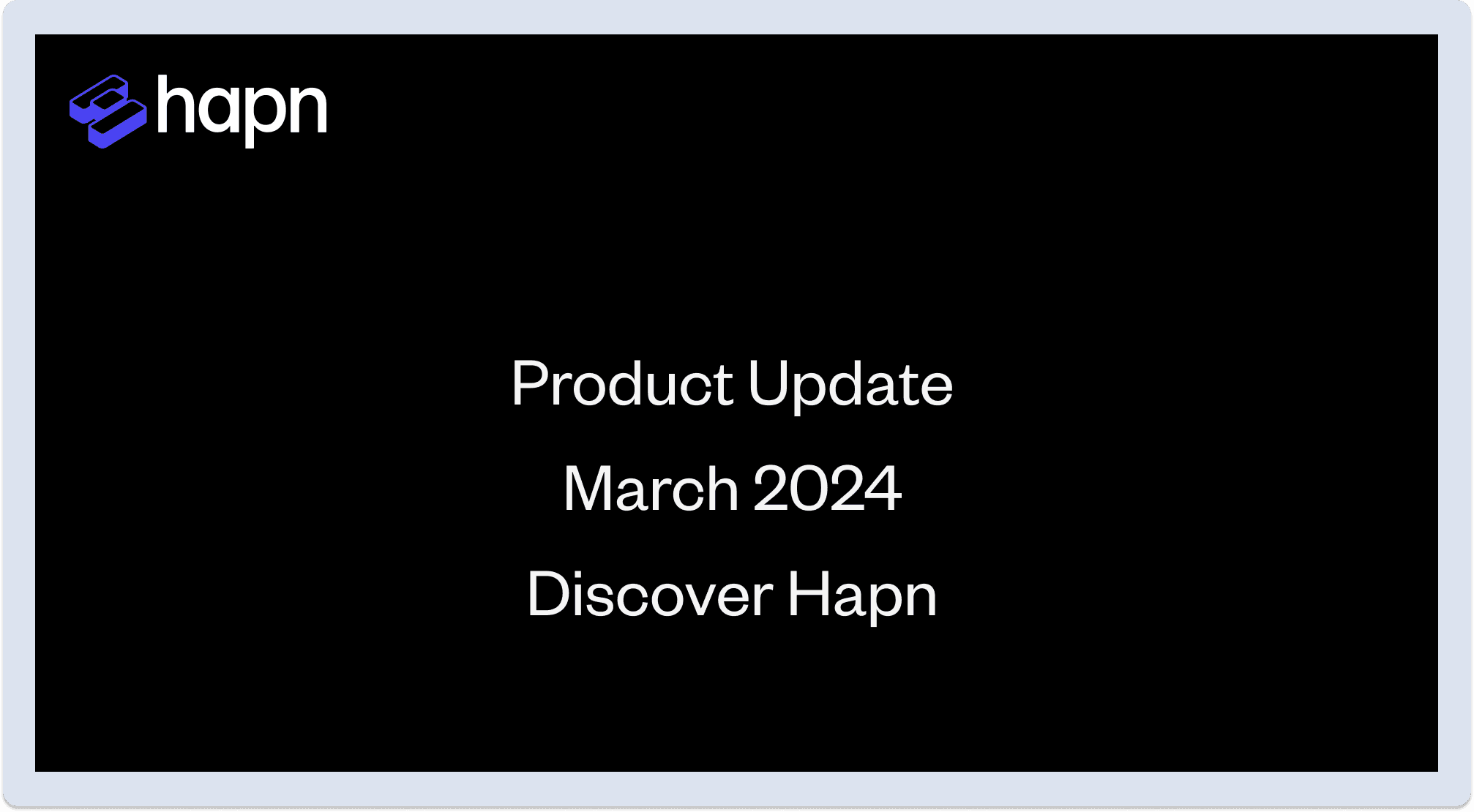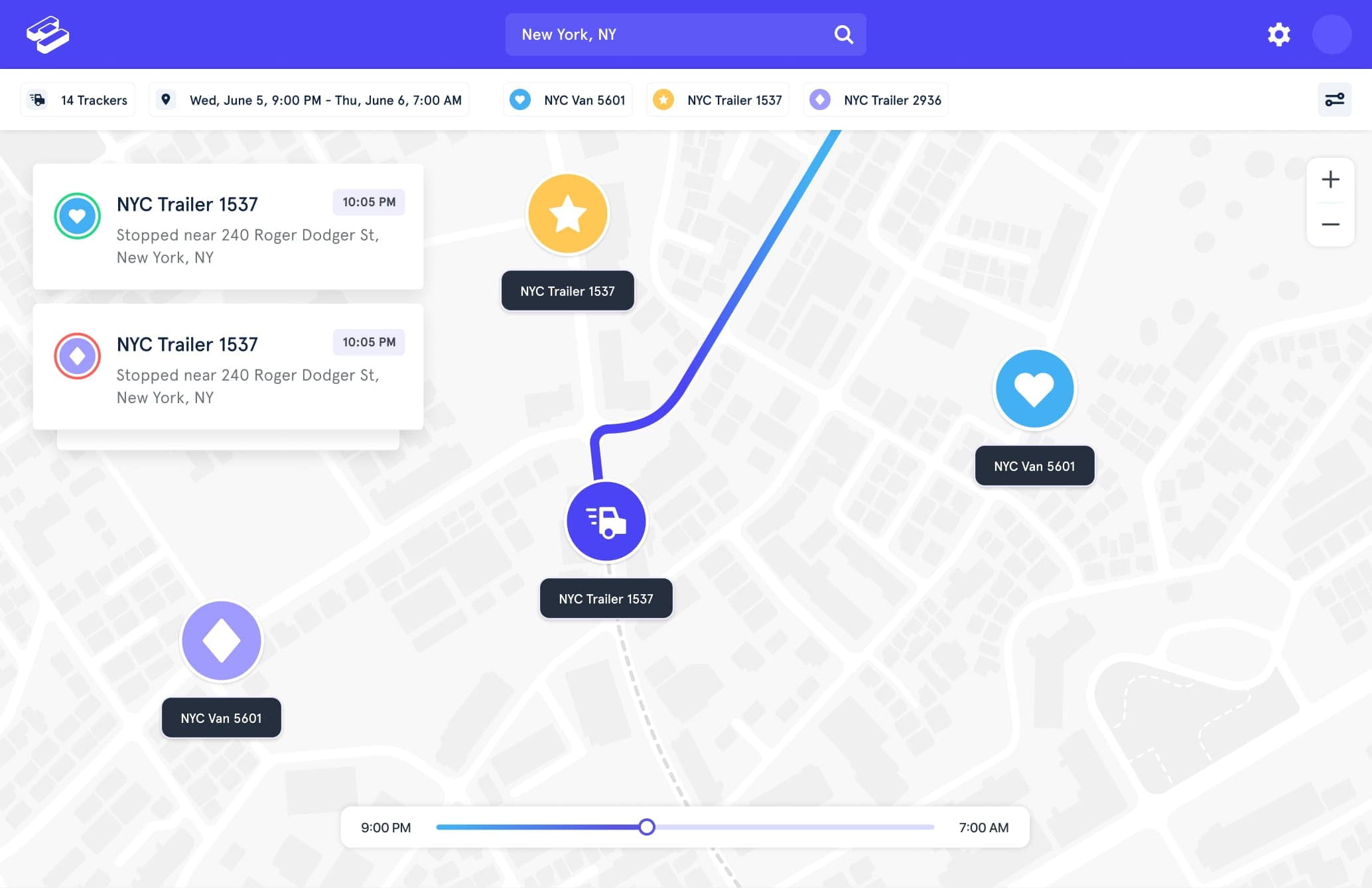Asset tracking monitors a company’s physical assets, including vehicles, equipment, and inventory. This process isn’t just about knowing where your stuff is located but also how it’s being used; vital information that improves efficiency and reduces loss.
Asset tracking relies on several technologies ranging from scannable tags to GPS devices. In addition, software provides a comprehensive look at a firm’s assets, enabling better decisions about allocation, usage, maintenance, and purchasing.
With this overview of asset tracking under our belts, let’s expand on this with a deep dive into what it all means.
How Does Asset Tracking Work?
At its simplest, asset tracking involves capturing basic information about an item. These details can include fundamental elements about the asset itself, such as brand and model. Additionally, most businesses want to know the item's location and condition. More elaborate systems may capture lifecycle and maintenance particulars, usage history, and other factors that are fundamental to smooth operations.
Asset information is then stored in a database or a specialized asset management system. This software can send alerts and generate reports. More advanced platforms can schedule maintenance and reorder consumable supplies (like lubricants and filters).
Why Is Asset Tracking Important?
Managing resources effectively is the responsibility of every business owner and manager; asset tracking helps make this possible. Without an effective asset-tracking system, companies can face increased costs due to replacing lost or stolen items. Plus, the time spent locating assets is a further drain.
One study shows that 55% of small businesses don’t track assets, making them vulnerable to waste and mismanagement.
Asset tracking also improves customer service. Being able to update clients with real-time location information about deliveries or service trucks is invaluable. Knowing the status of these vehicles shows a company is on top of things and focused on meeting customer needs. Further, locating and deploying an asset can keep work flowing smoothly and help the bottom line.
Maintaining equipment and vehicles in working order also helps with profitability. Asset tracking monitors when service work is required and alerts managers when equipment isn’t available due to repairs. In addition, keeping machinery and other mechanical assets in good condition promotes safety.
What Kinds of Assets Need to be Tracked?
In general, any physical asset that a business uses to perform its operations can benefit from being tracked. This includes everything from small tools and machines to vehicles and heavy equipment.
In a manufacturing setting, tracking the location and condition of expensive machinery is critical. On the other hand, a retailer might find it more important to keep tabs on inventory levels to ensure even stock levels. To a shipping company, tracking the location of delivery vehicles could be the top priority.
Even in an office environment, asset tracking can be critical. It can help track where office equipment is located, especially in larger companies with multiple locations. It can also help manage IT assets, such as computers and software licenses, ensuring that these resources are used effectively.
Asset Tracking Methods
There are several ways to track assets. At its most basic is a logbook or other paper-based record. It’s an approach that requires manual entries and is vulnerable to incorrect or absent data. While far from perfect, a log is better than nothing.
Barcodes are an integral part of many asset-tracking systems. They’re simple and cost-effective and can be used on anything capable of accepting a label. A scanner reads the individualized barcode and records the asset’s information. And depending on the supporting software, the application can be set to accept other entries (such as location and condition).
QR codes are another possibility for asset tracking and work similarly to barcodes. However, QR codes can hold more data and allow for easier scanning (they can be viewed from different angles).
The next rung up the asset tracking ladder is the RFID (radio frequency identification) tag. An RFID tag with unique identifying information is attached to the asset that needs tracking. When the tag is within range of a scanner (which can be set up for automatic operation), the corresponding information is captured and entered into the tracking system.
Although more expensive to implement than the barcode method, RFID tags are a faster and more efficient way of keeping track of tools, equipment, and other gear. Real-time tracking is also possible within a limited signal range. RFID signals work from a few feet to a few hundred yards, depending on the equipment. Bluetooth is another asset-tracking technology that operates like RFID.
More comprehensive real-time tracking comes from systems that use GPS (Global Positioning System) technology. A GPS device can be used on vehicles, equipment, and other key assets to locate their whereabouts. GPS requires a clear sky view to receive satellite signals, so garages, buildings, and trees may interfere with use. Cellular reception is also necessary to transmit location data to the tracking system.
Additional Asset Tracking Technologies
Whether using barcodes or GPS devices (or both) for asset tracking, all the resulting information must be processed to be usable. This may come in the form of software or a mobile app (or both). Here’s an overview.
Asset Tracking Software
There are many choices for asset tracking software. At a minimum, you’ll want a system that captures basics like the type of asset, the manufacturer, model information, and serial number.
More elaborate offerings will help with location details, lifecycle management, inventory control, maintenance and repair scheduling, and deployment. Some businesses choose a standalone asset-tracking tool, while others rely on software as part of a more extensive enterprise resource planning (ERP) system.
The key to an effective asset-tracking software is picking one that’s easy to use, offers scalability, and can integrate with necessary tracking technology (like GPS-based solutions). Good reporting and analytics are other essential features to look for.
Asset Tracking Apps
With so much of daily and business life revolving around smartphones, it only makes sense to have asset tracking that takes advantage of this. An app for smartphones or tablets can make asset tracking on the go easy.
Some technologies may integrate with a larger platform or operate as standalone tools. GPS tracking is a good example of this. A browser dashboard might provide complete access to all data and functionality, while an app can be set up to limit access (such as what a driver might see).
As with asset-tracking software, a smartphone app should be easy to use and provide ready access to needed information. Keep in mind that the app should be compatible with the smartphones in the field (iPhone and Android).
What Are Examples of Asset Tracking?
Asset tracking is different for every business. For a business in the logistics industry, this could involve tracking a truck to determine if delivery will happen on time. The same company could use asset tracking to see if a cargo container has arrived at a port or warehouse.
The construction industry also uses asset tracking. For instance, knowing a crane's location can ensure workers are ready and waiting at the job site when it arrives. Meanwhile, service companies, such as plumbers and electricians, can inform customers of accurate arrival times.
How Do You Maintain an Asset-Tracking System?
Asset tracking is only as effective as the system it’s based on. This means employing fundamental maintenance steps to ensure your system is up-to-date and accurate.
Check Tags and Trackers: Although asset tags (labels) are usually durable, they can get damaged, making scanning difficult or impossible. Set up a regular schedule to ensure all labels (including RFID tags) are readable by the scanners.
The same goes for GPS trackers, to be certain they’re functional and have all firmware updates.
Review Asset Data: Get in the habit of regularly analyzing asset data. What’s the point of having this information if you don’t take advantage of it? This way, you can spot trends or issues about using these assets.
Update the Software and App: Be sure to install the latest version of your asset-tracking software (and mobile app) to take advantage of the latest features and remove bugs that occur occasionally.
Train Staff: Everyone in your company that can benefit from asset tracking or the resulting data should know how to use the system. Set aside training time for new employees or team members that might be lagging.
Four Tips for Implementing an Asset-Tracking System
There’s a lot to consider when choosing an asset-tracking solution. However, keep these suggestions in mind as your research options, talk with vendors, and consult with staff.
#1 Choose Technology That Matches Your Needs
It’s easy to get enamored with all the bells and whistles offered by state-of-the-art asset-tracking systems. But concentrate on what your company really needs. For instance, a GPS-based solution is necessary if vehicles are the only assets requiring oversight. However, if you also have to manage inventory or a large number of tools, then layering in a barcode or RFID system would be helpful.
#2 Keep an Eye on the Budget
Closely tied into choosing the right technology (#1, above) is picking an asset-tracking solution that works within your budget. Look for a scaleable system that can grow as your business grows. This will make the technology more affordable early on. For example, you should only pay for two GPS trackers if that’s all you need now. But you can quickly and efficiently add more devices as your company’s fleet grows.
#3 Consider the Cost of Tags and Trackers
The make-or-break elements of a modern asset-tracking system are the barcode/QR code labels, RFID tags, and GPS trackers (what goes on the asset). Consider the cost of bringing these solutions into your business (including the expenses as your company grows).
#4 Remember the Software
Having all the labels and trackers in place is half the equation of asset tracking. Also, focus your implementation efforts on software (and apps) that makes data access convenient and has other helpful feature.
Benefits of Asset Tracking
Most people who manage a business have their hands full and may not be ready to tackle a new challenge like asset tracking. But the advantages of such a solution far outweigh the disadvantages. Here’s why.
- Improved Efficiency: If anyone at your company has wasted time looking for a tool or trying to find the location of a vehicle or a piece of equipment, then asset tracking can help. Productivity improves because the staff focuses on essential tasks rather than trying to track down something or someone.
- Enhanced Customer Service: Keeping clients up-to-date about delivery timelines and service appointments increases professionalism and customer satisfaction. There are no guessing games or wasteful back-and-forth with field staff.
- Increased Accountability: Knowing where your assets are located and how they’re used prevents misuse and theft or overcomes forgetfulness. Having the right data at your fingertips ensures company assets are deployed appropriately and effectively.
- Better Planning: Key insights into asset usage and performance make you a better business forecaster. You can make informed decisions about deployments, purchasing, maintenance requirements, and other factors that affect success.
FAQs: How Does Asset Tracking Work?
What is the right asset-tracking system for my business?
Each company is unique, so gauge your needs by identifying the number and type of assets you need to track and your budget. Keep future goals and needs in mind, too.
Can I start small to test if asset tracking is helpful?
Definitely, look for scalable technology so you don’t have to repeat your efforts later. Dipping your toe in the water is a great way to get staff buy-in and feedback before jumping in all the way. It’s not unusual for companies with multiple vehicles, for instance, to try a few GPS trackers before equipping the entire fleet.
What are the advantages of GPS technology in asset tracking?
Nothing beats knowing in real-time the location of a vehicle. There’s no tracking down employees; just a click or two will tell you where that truck is, where it’s been, and how fast it’s moving. GPS tracking is also ideal for equipment that gets moved between spots.



